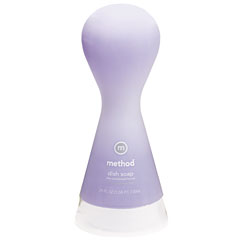
Thank you to Daniel Guillaume C., my partner in slowly attempting to change the world and break through the apathy of Gen Y and all of that kind of thing ("all of that kind of thing" is an indication of how intensely a rate this is happening at) for emailing me this article from fastcompany.com.
Since my brief stint working at a marketing firm during one of the more surreal passages of my life (there have been two to date), I quickly decided that in order to in any way possibly justify sitting there day after day, not to mention the hour commute in my car and the fact that I am essentially a Marxist, I must attempt to do something good. Is this not all one can hope to do in any situation? Some good? Something. Good?
In this case, I endeavored to attempt to use the firm I was working at to correct something I thought had been a long time coming--the use of marketing to promote green products. To use something bad (marketing or trickery, as I like to call it) to do something good (ease the wear and tear on our poor planet). Green products always, to me, looked dumpy and bland, boring, fruity, hippie-ish, etc., because for the longest time it was only a very minor part of the population that would buy these products. The type of people that would go into natural food stores. People that were bland, boring, fruity, hippie-ish, etc. I kid. But, honestly, a small demographic, no?
There were, of course, exceptions. Notably, the Method brand from Target which has an actually impeccable, modern, simple aesthetic that does not emphasize their eco-friendly nature as their main marketing tactic, but appeals to people's more general sensibilities, i.e. color, pretty, cutesy. No, lets face it, it looks like modern art, actually.
This is a great business model for eco-friendly companies. This is how green companies should be thinking. Unfortunately, green companies often times do not have enough lettuce (which I just learned means cash) to hire a marketing firm and design a whole aesthetic, which is why they end up with leaves on the labels, poor fonts and a general lack of consistency in their marketing. In other words, not much attention is paid to marketing. The attention is paid, rather, to creating a great, eco-friendly product.
But now green is in the mainstream, it's trendy, it's on people's consciousness--and not just people with granola breath. And as the article from Dan Guillaume points out, many, many companies are putting green claims on their products, when in actuality these products are not as eco-friendly as they claim. This is the case in so many situations: "Cheerios lower your cholesterol", "All-natural Doritoes", "Eco-Friendly Cleaning Product". Some of us are savvy enough to look beyond these labels and be skeptical, but the average person walking through a grocery store aisle trusts these labels.
The article states that TerraChoice Environmental Marketing company conducted an extensive study of 1018 products that claim to be green, and found that 99.9% of them committed one of the six sins of "greenwashing"--greenwashing meaning claiming to be green without actually being so. Most of the products were much more light green than kelly, the author says, and (I know, I use this phrase a lot) this is problematic.
How can truly green companies stand out in the pack? Go further. Go smarter. Go more beautiful.
I think the article, though not its purpose, furthers the point that it is necessary for serious green companies to appeal to the average consumer with general aesthetic marketing tactics while at the same time emphasizing, at least for now, the greenness of them. I feel that the green revolution may wane, and using typical marketing tactics can help boost brand loyalty. And just sell more products in general. So, I wrote a business proposal outlining this, but is anyone up for doing some pro-bono marketing work? Heh.

No comments:
Post a Comment